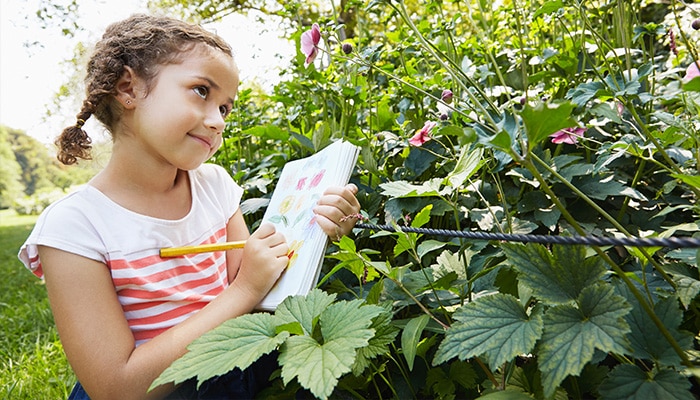While we believe that the books and resources recommended may be of value to you, keep in mind that these are suggestions only and you must do your own due diligence to determine whether the materials are appropriate and suitable for your use. PNC has no sponsorship or endorsement agreement with the authors or publishers of the materials listed.
OUTDOOR CLASSROOM

Nature Journals
Children will record changes in nature.

Lesson Objective
Children will observe changes in plants and animals in nature and will record these changes in their journals.
Science
What You'll Need
- Construction paper – 1 sheet per child
- Copy paper – 5 sheets per child
- Stapler (adult use)
- Crayons – 1 pack per child
- Pencil – 1 per child
What To Do
Note: This lesson requires (1) taking a walk outside 1 day per week for several weeks and (2) constructing a journal for each child prior to the lesson. To construct the journal, fold the construction paper and the copy paper in half. To make a journal, place 5 folded sheets of copy paper inside the folded construction paper, and staple in place.
- Discuss the plants and animals that the children may have seen near the school (see Guiding Student Inquiry).
- Tell the children that they are going to be nature scientists and that they will be keeping a journal of the plants and animals they see in nature.
- Take the children outside for a nature walk.
- Upon returning to the classroom, discuss the plants and animals that the children saw and where these items were located (trees, bushes, and flowers in fields, insects crawling, animals, nests in trees, and so on).
- Distribute the notebooks, and have the children draw the plants and animals that they observed.
- Go for a nature walk each week, and have the children record their observations on a separate page in their journals.
- Discuss any changes in nature that the children recorded, such as leaves changing, flowers wilting, grass turning yellow or brown, different animals/insects or no animals/insects, and so forth.
Resources
Home School Resources
Home educators: use these printable lesson PDFs to teach this lesson to your home schoolers. They're available in English and Spanish.
Content Provided By
Common Core State Standards Initiative – These lessons are aligned with the Common Core State Standards ("CCSS"). The CCSS provide a consistent, clear understanding of the concepts and skills children are expected to learn and guide teachers to provide their students with opportunities to gain these important skills and foundational knowledge [1]. Visit the CCSS


